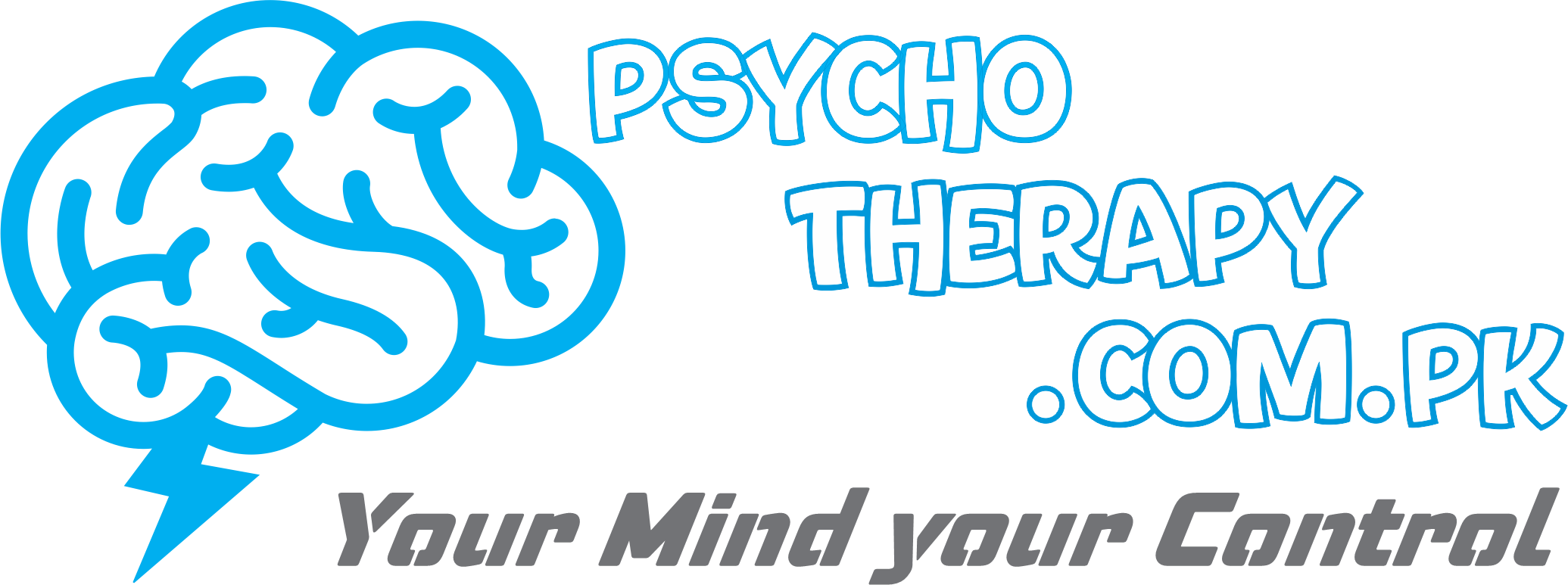Definition of Obsessive-Compulsive Disorder (OCD)
Obsessive-Compulsive Disorder (OCD) is a mental health condition characterized by persistent, intrusive thoughts (obsessions) and repetitive behaviors or mental acts (compulsions) that an individual feels compelled to perform in response to the obsessions. These thoughts and behaviors can significantly interfere with daily functioning, causing distress and impairment in various areas of life.
Key features of OCD include:
Obsessions: These are unwanted, distressing, and intrusive thoughts, images, or urges that repeatedly enter an individual’s mind. These thoughts are often irrational and provoke anxiety or discomfort.
Compulsions: In an effort to alleviate the anxiety or discomfort caused by obsessions, individuals with OCD engage in repetitive behaviors or mental rituals. These actions are known as compulsions and are often performed according to rigid rules.
Time-consuming: The obsessions and compulsions associated with OCD can be time-consuming, taking up a significant portion of the individual’s day and interfering with their ability to carry out daily tasks and responsibilities.
Interference with daily life: OCD can have a profound impact on various aspects of life, including work, social relationships, and personal well-being. The rituals and intrusive thoughts can be so consuming that they interfere with normal functioning.
Distress: Individuals with OCD often experience significant distress due to the obsessions and compulsions. The distress can be both emotional and functional, affecting one’s overall quality of life.
It’s important to note that everyone may experience intrusive thoughts or engage in repetitive behaviors at times, but for individuals with OCD, these thoughts and behaviors become severe, persistent, and difficult to control. OCD is a treatable condition, and various therapeutic approaches, including cognitive-behavioral therapy (CBT) and medication, can be effective in managing symptoms. If you or someone you know is experiencing symptoms of OCD, it’s advisable to seek professional help from a mental health professional.

History of Obsessive-Compulsive Disorder (OCD)
The understanding and recognition of symptoms similar to what we now classify as Obsessive-Compulsive Disorder (OCD) can be traced back through history, but the formal conceptualization of OCD as a distinct mental health disorder is a more recent development.
Early Historical References:
- Ancient Cultures: Some ancient texts and religious writings reference behaviors that might be interpreted as manifestations of OCD. For example, ancient religious texts include descriptions of rituals and purity concerns that could be seen as related to obsessive-compulsive symptoms.
Middle Ages:
- During the Middle Ages, some individuals with what might be considered OCD symptoms were sometimes labeled as being possessed by demons, leading to religious rituals as a form of treatment.
17th to 19th Centuries:
- In the 17th century, the French priest and scholar François de Sales wrote about scrupulosity, a condition characterized by excessive concerns about morality and sin, which is now seen as closely related to OCD.
- In the 19th century, with the emergence of psychiatry as a field, there were some clinical descriptions of what we might recognize as OCD symptoms. However, it was often lumped together with other mental health disorders, and there wasn’t a clear understanding of OCD as a distinct entity.
20th Century:
- The early 20th century saw increased recognition of obsessive-compulsive symptoms as a distinct clinical phenomenon. Sigmund Freud, the founder of psychoanalysis, wrote about obsessional neurosis, emphasizing the role of unconscious conflicts.
- It wasn’t until the latter part of the 20th century that the term “Obsessive-Compulsive Disorder” became widely accepted. The third edition of the Diagnostic and Statistical Manual of Mental Disorders (DSM-III), published in 1980, included OCD as a separate diagnostic category, highlighting its distinctiveness from other anxiety disorders.
Late 20th Century to Present:
- Research and understanding of OCD have continued to evolve. Cognitive-behavioral therapy (CBT), especially exposure and response prevention (ERP), has emerged as a highly effective treatment for OCD.
- Advances in neuroscience have contributed to a better understanding of the neurobiological underpinnings of OCD, leading to the development of medications, such as selective serotonin reuptake inhibitors (SSRIs), as part of the treatment approach.
Today, OCD is recognized as a common mental health disorder, and there is ongoing research to further understand its causes and to develop more effective treatments. Awareness campaigns and education about OCD have also helped reduce stigma and improve access to treatment for individuals experiencing these symptoms.
DSM-5 Criteria of Obsessive-Compulsive Disorder (OCD)
The Diagnostic and Statistical Manual of Mental Disorders, Fifth Edition (DSM-5), is a widely used classification system for mental health disorders. The criteria for diagnosing Obsessive-Compulsive Disorder (OCD) are outlined in the DSM-5. To receive a diagnosis of OCD, an individual must meet the following criteria:
A. Presence of Obsessions, Compulsions, or both:
Obsessions: Defined by the following:
Recurrent and persistent thoughts, urges, or images that are experienced, at some time during the disturbance, as intrusive and unwanted.
The individual attempts to ignore or suppress such thoughts, urges, or images, or to neutralize them with some other thought or action (i.e., by performing a compulsion).
Compulsions: Defined by the following:
Repetitive behaviors (e.g., hand washing, ordering, checking) or mental acts (e.g., praying, counting, repeating words silently) that the individual feels driven to perform in response to an obsession or according to rules that must be applied rigidly.
B. The obsessions or compulsions are time-consuming (e.g., take more than one hour per day) or cause clinically significant distress or impairment in social, occupational, or other important areas of functioning.
C. The obsessive-compulsive symptoms are not attributable to the physiological effects of a substance (e.g., a drug of abuse, a medication) or another medical condition.
D. The disturbance is not better explained by the symptoms of another mental disorder (e.g., excessive worries, as in generalized anxiety disorder; preoccupation with appearance, as in body dysmorphic disorder; difficulty discarding or parting with possessions, as in hoarding disorder; hair-pulling, as in trichotillomania [hair-pulling disorder]; skin-picking, as in excoriation [skin-picking] disorder).
It’s important to note that the diagnosis of OCD requires careful consideration by a qualified mental health professional. These criteria provide a standardized framework for identifying and diagnosing OCD, helping to ensure consistency in clinical practice and research related to this disorder.
Etiology of Obsessive-Compulsive Disorder (OCD)
The exact cause of Obsessive-Compulsive Disorder (OCD) is not fully understood, and it likely involves a combination of genetic, neurobiological, behavioral, cognitive, and environmental factors. Research has provided insights into potential contributors to the development of OCD:
Genetic Factors:
- There is evidence to suggest a genetic component in the development of OCD. Individuals with a family history of OCD or related disorders may have a higher risk of developing the condition themselves.
Neurobiological Factors:
- Serotonin Dysfunction: Alterations in the neurotransmitter serotonin have been implicated in OCD. Medications that affect serotonin levels, such as selective serotonin reuptake inhibitors (SSRIs), are often used in the treatment of OCD.
- Brain Structure and Function: Changes in the structure and function of certain brain areas, including the frontal cortex, striatum, and thalamus, have been observed in individuals with OCD. The precise nature of these alterations and their role in the development of OCD is an area of ongoing research.
Cognitive Factors:
- Dysfunctional Thought Patterns: Cognitive theories propose that individuals with OCD may have certain dysfunctional thought patterns, such as an exaggerated sense of responsibility, perfectionism, and intolerance of uncertainty. These cognitive factors may contribute to the persistence of obsessions and the development of compulsive behaviors.
Behavioral Factors:
- Learning and Conditioning: Some theories suggest that certain behaviors associated with OCD may be learned responses to reduce anxiety. For example, if a person performs a specific ritual (compulsion) in response to an obsessive thought and experiences a decrease in anxiety, they may be more likely to repeat that behavior in the future.
Environmental Factors:
- Stressful Life Events: Traumatic or highly stressful life events may contribute to the onset or exacerbation of OCD symptoms in some individuals. Stress may act as a trigger for the expression of genetic vulnerability.
Autoimmune Factors:
- Some research suggests a potential link between OCD and autoimmune processes. Autoimmune reactions that affect the brain could contribute to the development of OCD symptoms in some individuals.
It’s important to note that these factors are interconnected, and the development of OCD is likely to involve a complex interplay of genetic predisposition, neurobiological processes, environmental influences, and individual experiences. The understanding of the etiology of OCD is continually evolving as research advances in the field of psychiatry and neuroscience. Effective treatment approaches often involve a combination of medication (such as SSRIs) and psychotherapy (especially cognitive-behavioral therapy, including exposure and response prevention).

Theories related to Obsessive-Compulsive Disorder (OCD)
Several theories have been proposed to explain the development and maintenance of Obsessive-Compulsive Disorder (OCD). These theories often complement each other, highlighting different aspects of the disorder. Here are some key theories related to OCD:
Biological and Neurochemical Theories:
- Serotonin Dysregulation: One prominent biological theory suggests that imbalances in the neurotransmitter serotonin may play a role in the development of OCD. This theory is supported by the effectiveness of serotonin reuptake inhibitors (SRIs), such as selective serotonin reuptake inhibitors (SSRIs), in reducing OCD symptoms.
- Brain Circuitry Dysfunction: Dysfunction in specific brain circuits, particularly involving the orbitofrontal cortex, striatum, and thalamus, has been implicated in OCD. Malfunctions in these circuits may contribute to the obsessive thoughts and compulsive behaviors characteristic of the disorder.
Cognitive Theories:
- Cognitive Biases and Dysfunctional Beliefs: Cognitive theories propose that individuals with OCD may have cognitive biases, such as an inflated sense of responsibility, perfectionism, and intolerance of uncertainty. These biases contribute to the development and maintenance of obsessions and compulsions.
- Cognitive Misinterpretation: People with OCD may misinterpret the significance of intrusive thoughts, perceiving them as highly threatening. This misinterpretation fuels anxiety and prompts compulsive behaviors to alleviate the distress.
Behavioral Theories:
- Operant Conditioning: Behavioral theories suggest that the compulsive behaviors in OCD may be reinforced through operant conditioning. If a person engages in a specific ritual (compulsion) and experiences a reduction in anxiety, they are more likely to repeat that behavior in the future.
- Classical Conditioning: The development of OCD symptoms may be linked to classical conditioning, where certain stimuli become associated with fear and anxiety, leading to the development of compulsive rituals as a way to cope.
Psychodynamic Theories:
- Unresolved Conflict and Defense Mechanisms: Psychodynamic theories propose that OCD symptoms may arise from unresolved unconscious conflicts. Compulsive behaviors may function as defense mechanisms to manage anxiety stemming from these conflicts.
Evolutionary Psychology:
- Overactive Threat Detection System: Some theories suggest that the obsessive concerns and compulsive behaviors observed in OCD may be linked to an overactive threat detection system. In an evolutionary context, individuals who were more vigilant and cautious might have had a survival advantage.
Neuroimmunological Theories:
- Autoimmune and Inflammatory Processes: Some studies have explored the potential role of autoimmune and inflammatory processes in the development of OCD. Abnormal immune responses could potentially contribute to neurobiological changes associated with OCD.
It’s important to note that these theories are not mutually exclusive, and OCD is likely influenced by a combination of genetic, neurobiological, cognitive, behavioral, and environmental factors. As research continues, our understanding of the complexities of OCD and the interplay of these factors will likely evolve.
Risk factors of Obsessive-Compulsive Disorder (OCD)
Several risk factors may contribute to the development of Obsessive-Compulsive Disorder (OCD). It’s essential to note that the presence of these risk factors does not guarantee that an individual will develop OCD, and the disorder is likely influenced by a combination of genetic, biological, environmental, and psychological factors. Here are some commonly identified risk factors:
Family History:
Individuals with a family history of OCD or related disorders may be at an increased risk. This suggests a genetic component to the disorder, although specific genetic factors are complex and not fully understood.
Genetics:
Genetic factors play a role in the susceptibility to OCD. Certain genetic variations or mutations may contribute to an individual’s predisposition to develop obsessive-compulsive symptoms.
Brain Structure and Function:
Abnormalities in the structure and function of certain brain areas, including the orbitofrontal cortex, striatum, and thalamus, have been associated with OCD. Differences in neural circuitry may contribute to the development of obsessive thoughts and compulsive behaviors.
Childhood Adversity:
Experiencing traumatic or highly stressful events during childhood may increase the risk of developing OCD. Adverse childhood experiences may act as environmental stressors that contribute to the onset of symptoms.
Autoimmune Factors:
Some research suggests a potential link between autoimmune processes and the development of OCD. Autoimmune reactions affecting the brain could contribute to the emergence of obsessive-compulsive symptoms.
Gender:
OCD often begins in childhood or adolescence, and there is some evidence to suggest that the disorder may be more common in males during childhood but more prevalent in females during adolescence and adulthood.
Personality Factors:
Certain personality traits, such as perfectionism, may be associated with an increased risk of developing OCD. Individuals who are highly conscientious and have a strong sense of responsibility may be more prone to obsessive thoughts and compulsive behaviors.
Neurological Disorders:
Some neurological conditions, such as Tourette’s syndrome or other tic disorders, are associated with an increased risk of developing OCD. There is a notable overlap in the neural circuits involved in these conditions.
Pregnancy and Postpartum:
Pregnancy and the postpartum period can be associated with an increased risk of OCD in susceptible individuals. Hormonal changes and the stress of parenting may contribute to the onset or exacerbation of symptoms.
Streptococcal Infections:
Pediatric Autoimmune Neuropsychiatric Disorders Associated with Streptococcal Infections (PANDAS) is a subset of OCD that has been associated with streptococcal infections in some cases. However, the relationship between infections and OCD is complex and not fully understood.
It’s important to remember that the presence of these risk factors does not guarantee the development of OCD, and many individuals with these risk factors do not develop the disorder. Additionally, OCD is a treatable condition, and early intervention can be effective in managing symptoms and improving quality of life. If you or someone you know is experiencing symptoms of OCD, it’s advisable to seek professional help from a mental health professional.
Treatment of Obsessive-Compulsive Disorder (OCD)
Obsessive-Compulsive Disorder (OCD) is a treatable condition, and various therapeutic approaches are available to help individuals manage their symptoms. Treatment for OCD often involves a combination of medication, psychotherapy, and sometimes other supportive interventions. Here are some key components of the treatment for OCD:
Cognitive-Behavioral Therapy (CBT):
- Exposure and Response Prevention (ERP): CBT, particularly ERP, is considered the most effective form of psychotherapy for OCD. ERP involves exposing individuals to thoughts, images, and situations that trigger anxiety (exposure) while preventing the accompanying compulsive behaviors (response prevention). Over time, this helps reduce the anxiety associated with obsessions.
- Cognitive Restructuring: This involves identifying and challenging irrational thoughts and beliefs associated with obsessions. By addressing distorted thought patterns, individuals can change their response to obsessive thoughts.
Medication:
- Selective Serotonin Reuptake Inhibitors (SSRIs): Antidepressant medications, particularly SSRIs, are commonly prescribed for OCD. Examples include fluoxetine, fluvoxamine, and sertraline. These medications can help regulate serotonin levels in the brain.
- Clomipramine: This is a tricyclic antidepressant that is also effective in treating OCD. It affects serotonin as well as other neurotransmitters.
- Combination Therapy: In some cases, a combination of CBT and medication may be recommended for more comprehensive treatment.
Mindfulness and Acceptance-Based Therapies:
- Therapies such as Acceptance and Commitment Therapy (ACT) and mindfulness-based approaches may be beneficial in helping individuals accept their thoughts without judgment and develop strategies for managing distress.
Support Groups:
- Joining support groups, whether in-person or online, can provide individuals with OCD an opportunity to share experiences, coping strategies, and encouragement. Support from others who understand the challenges of OCD can be valuable.
Family Therapy:
- Involving family members in therapy can be helpful, especially for adolescents with OCD. Family therapy can improve communication, understanding, and support within the family system.
Education and Psychoeducation:
- Learning more about OCD and its treatment can empower individuals and their families. Psychoeducation involves providing information about the nature of OCD, the treatment process, and coping strategies.
Hospitalization or Intensive Treatment Programs:
- In severe cases or when OCD significantly impairs functioning, hospitalization or participation in intensive outpatient or residential treatment programs may be considered.
Stress Management and Lifestyle Changes:
- Incorporating stress management techniques, regular exercise, and healthy lifestyle habits can contribute to overall well-being and complement other treatment modalities.
Treatment plans are tailored to each individual’s specific needs, and it’s important for individuals with OCD to work closely with mental health professionals to develop a comprehensive approach. Early intervention is often crucial in managing symptoms and preventing the exacerbation of OCD. If you or someone you know is experiencing symptoms of OCD, seeking help from a mental health professional is strongly recommended.
Therapies related to Obsessive-Compulsive Disorder (OCD)
Several therapeutic approaches are used in the treatment of Obsessive-Compulsive Disorder (OCD), aiming to reduce obsessive thoughts and compulsive behaviors, alleviate distress, and improve overall functioning. Here are some key therapeutic modalities commonly employed in the management of OCD:
Cognitive-Behavioral Therapy (CBT):
- Exposure and Response Prevention (ERP): CBT, and specifically ERP, is considered the gold standard for treating OCD. In ERP, individuals are gradually exposed to anxiety-provoking thoughts, images, or situations (exposure) while refraining from engaging in the corresponding compulsive behaviors (response prevention). This helps break the cycle of anxiety and compulsions.
- Cognitive Restructuring: This aspect of CBT involves identifying and challenging irrational thoughts and beliefs associated with obsessions. By modifying negative thought patterns, individuals can change their emotional response to obsessive thoughts.
Mindfulness-Based Therapies:
- Acceptance and Commitment Therapy (ACT): ACT encourages individuals to accept their thoughts and feelings without judgment while committing to behaviors aligned with their values. Mindfulness and acceptance are key components.
- Mindfulness-Based Cognitive Therapy (MBCT): MBCT combines traditional CBT strategies with mindfulness techniques. It helps individuals observe their thoughts and feelings without becoming overwhelmed by them.
Dialectical Behavior Therapy (DBT):
- DBT, originally developed for borderline personality disorder, incorporates elements of mindfulness and behavioral therapy. It can be adapted to address distress tolerance and emotion regulation in individuals with OCD.
Psychodynamic Therapy:
- Psychodynamic approaches explore unconscious conflicts and unresolved issues that may contribute to obsessive thoughts and compulsive behaviors. The therapeutic focus is on gaining insight into the underlying emotional and psychological factors.
Group Therapy:
- Group therapy, particularly in the form of support groups, allows individuals with OCD to share experiences, coping strategies, and encouragement. Group settings can provide a sense of community and reduce feelings of isolation.
Family Therapy:
- In family therapy, family members are involved in the treatment process. This can enhance understanding, communication, and support within the family system.
Virtual Reality Therapy:
- Virtual reality exposure therapy involves creating computer-generated environments to simulate situations that trigger obsessive thoughts. This approach allows individuals to practice responding to triggers in a controlled setting.
Complementary and Alternative Therapies:
- Some individuals find relief through complementary approaches such as acupuncture, yoga, or dietary changes. While these may not replace evidence-based treatments, they can be used as adjunctive strategies.
The choice of therapy depends on the individual’s preferences, the severity of symptoms, and the clinician’s expertise. Often, a combination of therapeutic modalities is used to address the multifaceted nature of OCD. It’s essential for individuals with OCD to work closely with mental health professionals to develop a personalized treatment plan tailored to their needs.
Preventions of Obsessive-Compulsive Disorder (OCD)
Preventing Obsessive-Compulsive Disorder (OCD) is challenging because the exact cause of the disorder is not fully understood, and it likely involves a complex interplay of genetic, biological, environmental, and psychological factors. However, early intervention and certain strategies may help reduce the risk of developing OCD or minimize the impact of symptoms. Here are some general considerations:
Early Intervention:
Identifying and addressing obsessive-compulsive symptoms early can be crucial in preventing the disorder from worsening. If individuals or their loved ones notice signs of OCD, seeking professional help promptly can lead to effective interventions.
Psychoeducation:
Educating individuals, families, and communities about OCD can help reduce stigma and increase awareness. Understanding the nature of OCD and its symptoms may encourage early recognition and intervention.
Stress Management:
Promoting healthy stress management techniques can be beneficial. Chronic stress has been linked to the exacerbation of OCD symptoms, so developing effective coping mechanisms may be preventive.
Resilience-Building:
Encouraging the development of resilience and adaptive coping skills, especially in children and adolescents, may contribute to better mental health outcomes. This includes teaching problem-solving skills and emotional regulation.
Addressing Trauma:
Early intervention to address and support individuals who have experienced trauma may be important. Traumatic experiences can sometimes contribute to the development of OCD symptoms.
Healthy Lifestyle Habits:
Promoting overall well-being through regular exercise, a balanced diet, and sufficient sleep can contribute to mental health. Healthy lifestyle habits may have a positive impact on mood and stress levels.
Avoiding Substance Abuse:
Substance abuse, including the misuse of drugs and alcohol, can worsen mental health conditions. Avoiding substance abuse may help reduce the risk of exacerbating or triggering OCD symptoms.
Parental Support:
Providing a supportive and nurturing environment for children may contribute to their emotional well-being. Parental involvement and support can play a role in building resilience and reducing stress.
Genetic Counseling:
In cases where there is a family history of OCD or related disorders, genetic counseling may be considered. Understanding genetic factors and risk may inform decisions about family planning and intervention strategies.
It’s important to note that while these strategies may be helpful in certain cases, they are not guarantees against the development of OCD. Additionally, OCD is a treatable condition, and individuals experiencing symptoms should seek professional help. Early diagnosis and appropriate treatment, including therapy and, if necessary, medication, can significantly improve outcomes for individuals with OCD.










